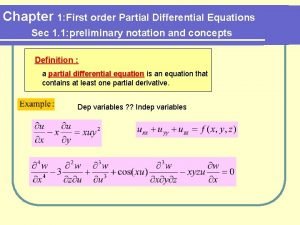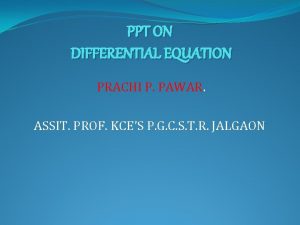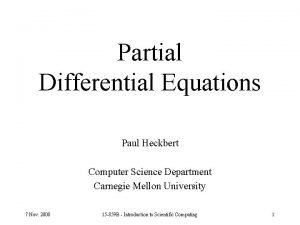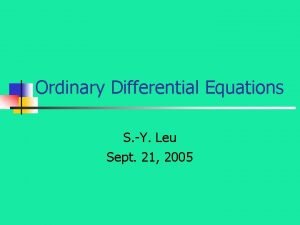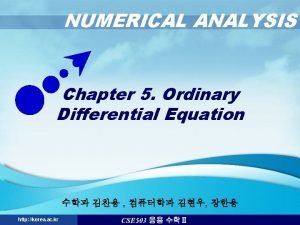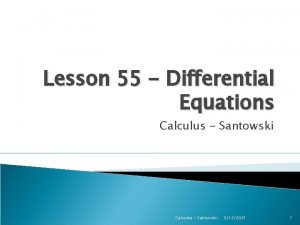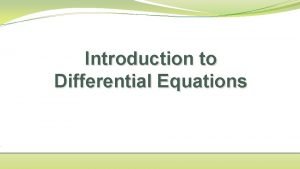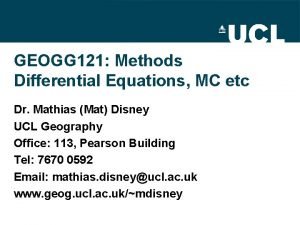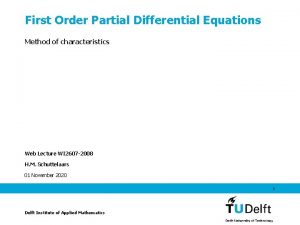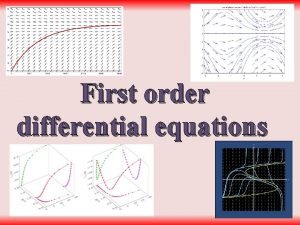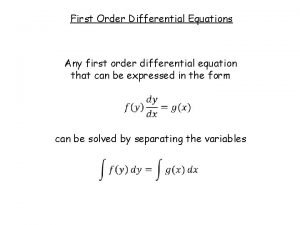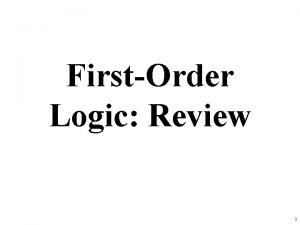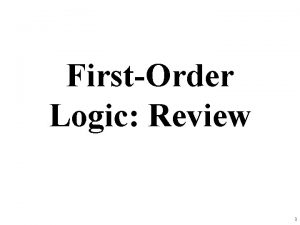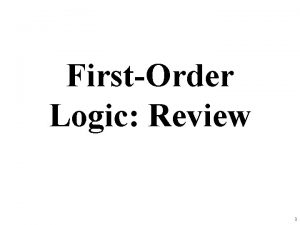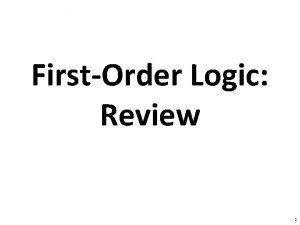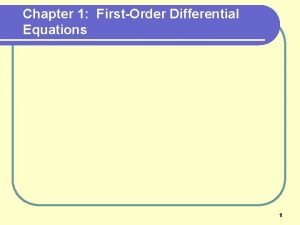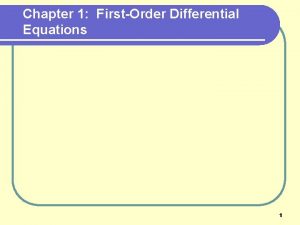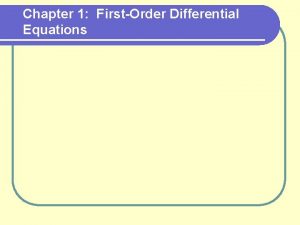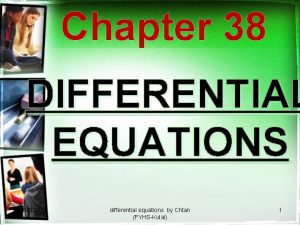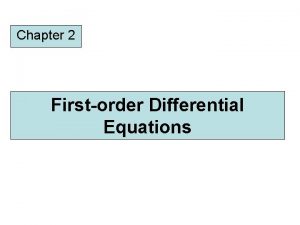Chapter 1 FirstOrder Differential Equations 1 Sec 1













- Slides: 13

Chapter 1: First-Order Differential Equations 1

Sec 1. 4: Separable Equations and Applications Definition 2. 1 A 1 st order De of the form is said to be separable. 1 2 3 3 2

Sec 1. 2 How to Solve ? 3

Sec 1. 4: Separable Equations and Applications 1 3 2 4 Solve the differential equation It may or may not possible to express y in terms of x (Implicit Solution) 4

Sec 1. 4: Separable Equations and Applications Solve the IVP 5

Implicit Solutions and Singular Solutions Solve the IVP Implicit So , Particular, sol 2 -2 6

Sec 1. 2 How to Solve ? Remember division 3) Remember division 7

Implicit Solutions and Singular Solutions Singular Sol division Solve the IVP a general Sol Particular Sol Family of sol (c 1, c 2, . . ) No C a general Sol The general Sol Family of sol (c 1, c 2, . . ) 1) It is a general sol 2) Contains every particular sol 8 Singular Sol no value of C gives this sol

Sec 1. 4: Separable Equations and Applications 1 3 2 4 Solve the differential equation It may or may not possible to express y in terms of x (Implicit Solution) 9

10

Modeling and Separable DE Natural Growth and Decay The Differential Equation Cooling and Heating According to Newton’s Law of cooling K a constant serves as a mathematical model for a remarkably wide range of natural phenomena. q. Population Growth q. Compound Interest q. Radioactive Decay q. Drug Elimination Torricelli’s Law Water tank with hole 11

The population f a town grows at a rate proportional to the population present at time t. the initial population of 500 increases by 15% in 10 years. What will be the population in 40 years? The Differential Equation K a constant 12

The Differential Equation K a constant 13
 Highest order chapter 1
Highest order chapter 1 Differential equations projects
Differential equations projects Equations reducible to the linear form
Equations reducible to the linear form Differential equations in computer science
Differential equations in computer science Cengage differential equations
Cengage differential equations Non linear ode
Non linear ode Transient solution differential equations
Transient solution differential equations Differential calculus
Differential calculus Differential equation examples
Differential equation examples Separation of variables
Separation of variables First order pde
First order pde First order ode
First order ode Solving 1st order differential equations
Solving 1st order differential equations What is linear differential equation
What is linear differential equation
